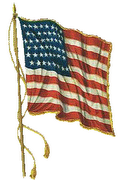Vietnam and Iraq: Myth vs. Reality (hat tip: Anonymous)
by Oliver North
WASHINGTON, D.C. -- Much is being said and written these days about how the war in Iraq resembles the war in Vietnam. The theme began during the 2004 presidential campaign with Democrat presidential candidate John Kerry describing Iraq as a "quagmire" and demanding a "date certain" for a U.S. pullout. Purveyors of the "news" in our so-called mainstream media picked up the beat -- though many of them are too young to know anything more about Vietnam than what they learned from a movie. The "Vietnam deja vu" howl is now in full cry.
But it's a myth.
Having now spent nearly as much time in Iraq as I did on my first "tour" of Vietnam in 1968-69, it's readily apparent that the parallels between the two wars are practically non-existent on the battlefield. In the press and politics -- it's a different matter. The barons of bombast have decided that Iraq equals Vietnam. Those who make this argument are ignoring some very inconvenient facts.
Most importantly, the adversaries confronted in both wars are radically dissimilar. In Vietnam, U.S. troops faced nearly a quarter of a million conscripted but well-trained, disciplined and equipped North Vietnamese Army (NVA) regulars and upwards of 100,000 highly organized Viet Cong (VC) insurgents on a constant basis from 1966 onward. Both the NVA and the VC "irregulars" were well indoctrinated in communist ideology, received direct aid from the Soviet Union, communist China and the Warsaw Pact and benefited from logistics and politico-military support networks in neighboring countries. During major campaigns against U.S. and South Vietnamese forces -- of which there were many each year -- both the NVA and VC responded to centralized command and control directed by authorities in Hanoi. None of that is true of Iraq.
In the land between the Tigris and Euphrates Rivers, enemy combatants are a combination of disparate Sunni jihadi terrorists, disenfranchised Ba'athists, Shia militias aligned with Iran, fanatical foreign Wahhabi Mujahadeen, Muslim Brotherhood-supported radicals and well-armed, hyper-violent criminal gangs, often with tribal connections that are stronger than any ideological, religious or political affiliations. Though many jihadis receive indoctrination, munitions and refuge from a network of mosques and sectarian Islamic groups, centralized command, control and logistics support is virtually nonexistent. Operating in small independent "cells" instead of organized, disciplined military units, the enemy in Mesopotamia has no ability to mount any kind of protracted offensive against United States or even lightly armed Iraqi government forces. Increasingly dependent on improvised explosive devices and suicide-bomb attacks to inflict casualties, the opposition in Iraq is more "anarchy" than "insurgency."
The second great fable about the war in Iraq is the horrific casualty rate. This is always the most difficult aspect of any war to address, for all comparisons seem cynical. For those of us who have held dying soldiers, sailors, airmen or Marines in our arms, it is particularly painful. Yet, it is one of the oft-cited reasons for why we were "forced" to get out of Vietnam -- and why we are once again being urged by the media to "end the bloodshed" in Iraq. Here's a reality check.
Over the course of the entire Vietnam War, the "average" rate at which Americans died as a consequence of armed combat was about 15 per day. In 1968-69, when my brother and I served as Rifle Platoon and Infantry Company Commanders -- he in the Army and I in the Marines -- 39 Americans died every day in the war zone. In Iraq, the "kill rate" for U.S. troops is 2.06 per day.
During the 1968 "Tet Offensive" in Vietnam there were more than 2,100 U.S. casualties per week. In Iraq, the U.S. casualty rate from all causes has never exceeded 490 troops in a month.
None of this is to say "my war was tougher than your war." As of this writing 2,802 young Americans have been killed during three and a half years of war in Iraq. That's roughly the same number killed at Iwo Jima during the first three and a half days of fighting against the Japanese. Every life lost was precious and every loss grievous to those who loved them. Unfortunately, our media intends to use every one of those killed to make their point. It's a lesson they learned in Vietnam.
On Feb. 27, 1968, after a month of brutal fighting and daily images of U.S. casualties on American television, Walter Cronkite, then the host of the CBS Evening News, proclaimed that the Tet Offensive had proven to him that the Vietnam War was no longer winnable. Four weeks later, Lyndon Johnson told the nation that "I shall not seek, and I will not accept the nomination of my party for another term as your president." It didn't matter that Tet had been a decisive victory for the United States and South Vietnam.
Today's potentates of the press are trying to deliver the same message: that Iraq, like Vietnam, is un-winnable. One television network has gone so far as to broadcast images of U.S. troops being killed by terrorists -- making Iraq the first war where Americans get their news from the enemy.
The war in Vietnam wasn't lost during "Tet '68" no matter what Cronkite said. Rather, it was lost in the pages of America's newspapers, on our televisions, our college campuses -- and eventually in the corridors of power in Washington. We need to pray that this war isn't lost the same way.
Pertinent Links:
1) Vietnam and Iraq: Myth vs. Reality
Saturday, October 28, 2006
Subscribe to:
Post Comments (Atom)




No comments:
Post a Comment